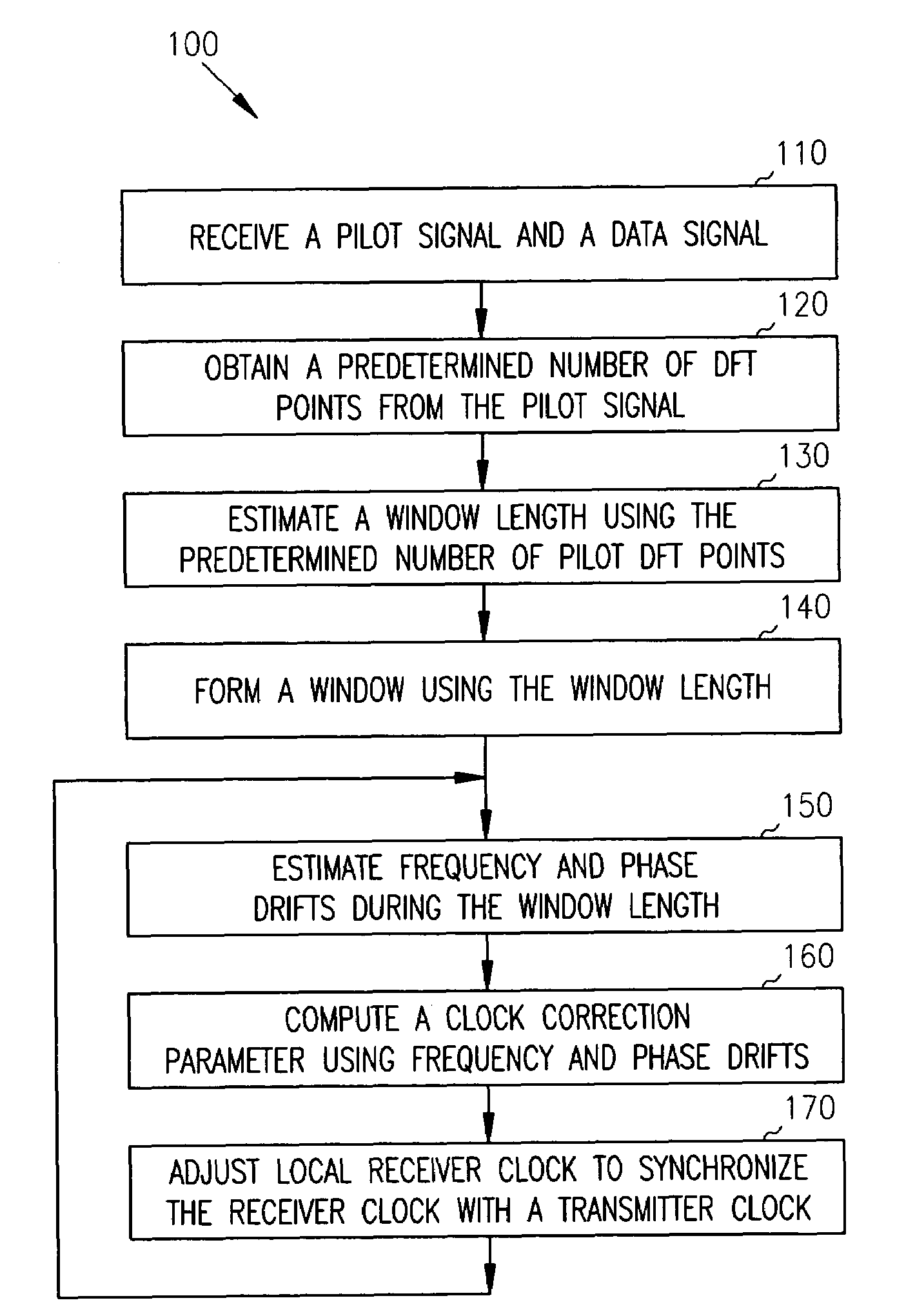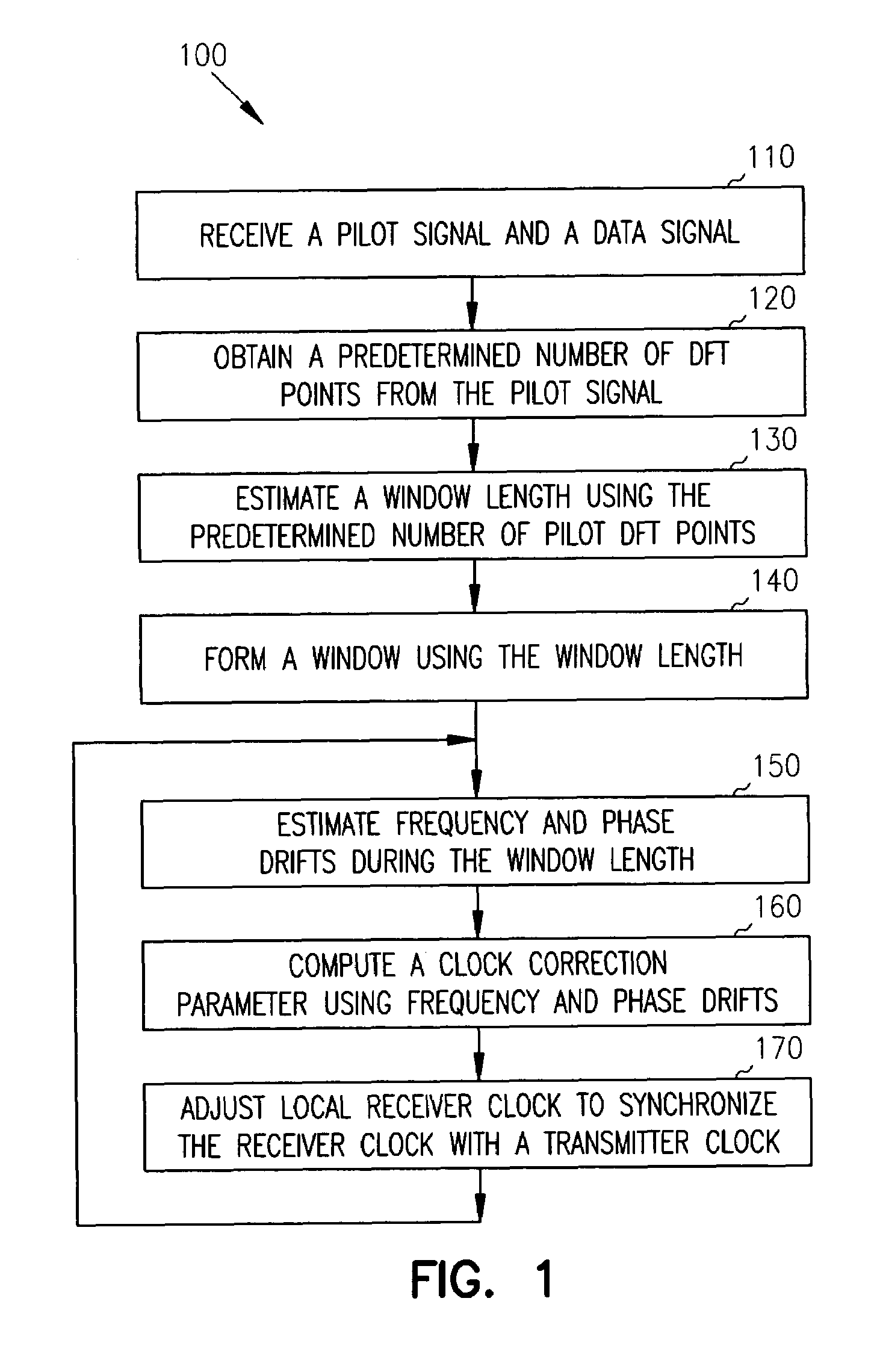Apparatus, methods, systems, and articles incorporating a clock correction technique
a clock correction and multi-carrier technology, applied in the field of data communication systems, can solve the problems of complex loop timing, i.e. synchronization, and difficulty in providing synchronization between the adc and dac clocks running on the local transceiver side and the adc and dac clocks running on the remote transceiver sid
- Summary
- Abstract
- Description
- Claims
- Application Information
AI Technical Summary
Benefits of technology
Problems solved by technology
Method used
Image
Examples
Embodiment Construction
[0022]The present invention provides an improved clock correction technique for multi-carrier communication systems. In one embodiment, this is accomplished by estimating frequency and phase drifts between a local receiver clock and a remote transmitter clock using a pilot signal received by a local receiver. The local receiver clock is then adjusted using the estimated frequency and phase drifts to synchronize the local receiver clock with the remote transmitter clock to improve performance.
[0023]In the following detailed description of the embodiments of the invention, reference is made to the accompanying drawings that form a part hereof, and in which are shown by way of illustration specific embodiments in which the invention may be practiced. These embodiments are described in sufficient detail to enable those skilled in the art to practice the invention, and it is to be understood that other embodiments may be utilized and that changes may be made without departing from the sc...
PUM
 Login to View More
Login to View More Abstract
Description
Claims
Application Information
 Login to View More
Login to View More - R&D
- Intellectual Property
- Life Sciences
- Materials
- Tech Scout
- Unparalleled Data Quality
- Higher Quality Content
- 60% Fewer Hallucinations
Browse by: Latest US Patents, China's latest patents, Technical Efficacy Thesaurus, Application Domain, Technology Topic, Popular Technical Reports.
© 2025 PatSnap. All rights reserved.Legal|Privacy policy|Modern Slavery Act Transparency Statement|Sitemap|About US| Contact US: help@patsnap.com



